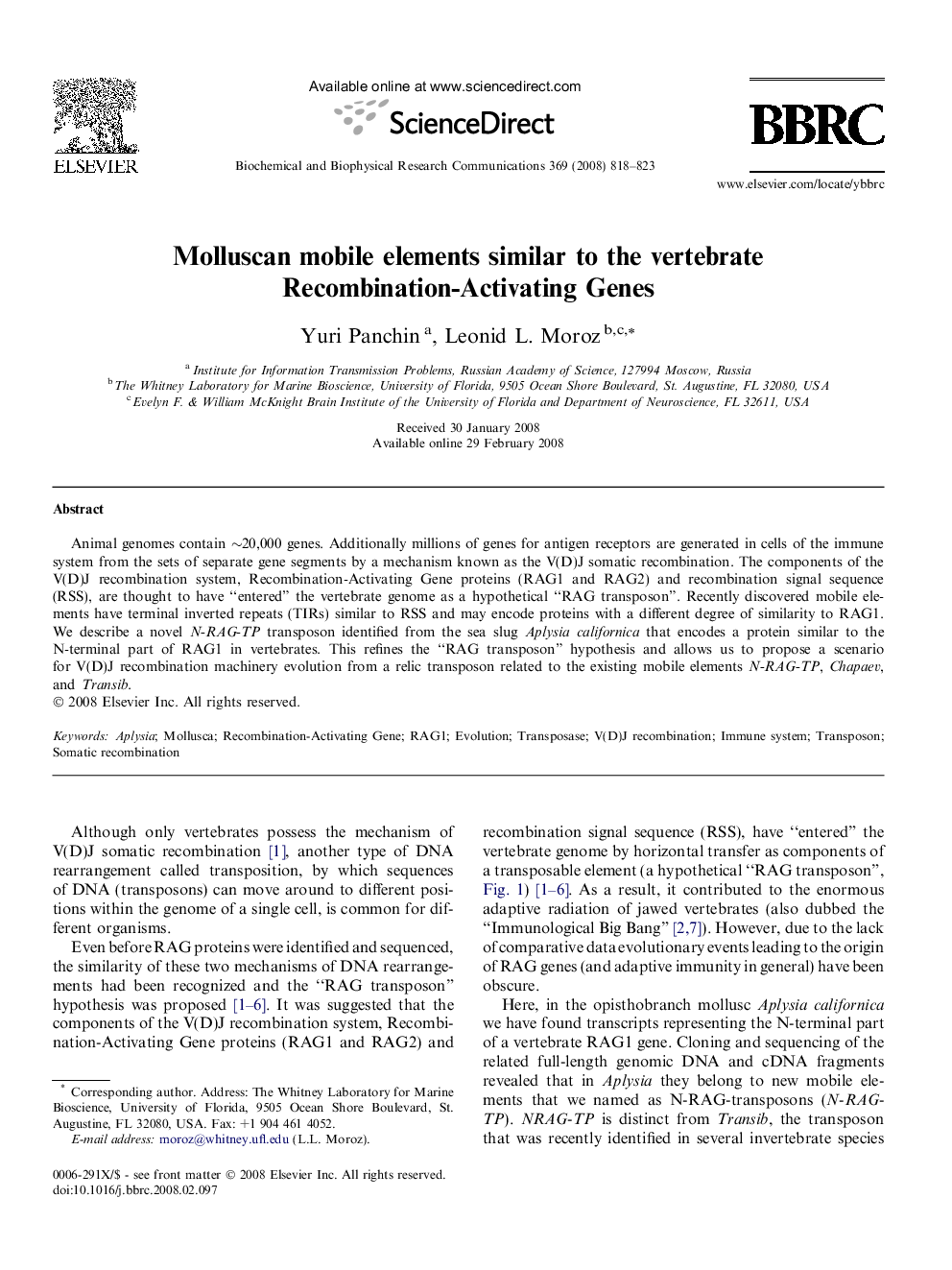| Article ID | Journal | Published Year | Pages | File Type |
|---|---|---|---|---|
| 1935977 | Biochemical and Biophysical Research Communications | 2008 | 6 Pages |
Animal genomes contain ∼20,000 genes. Additionally millions of genes for antigen receptors are generated in cells of the immune system from the sets of separate gene segments by a mechanism known as the V(D)J somatic recombination. The components of the V(D)J recombination system, Recombination-Activating Gene proteins (RAG1 and RAG2) and recombination signal sequence (RSS), are thought to have “entered” the vertebrate genome as a hypothetical “RAG transposon”. Recently discovered mobile elements have terminal inverted repeats (TIRs) similar to RSS and may encode proteins with a different degree of similarity to RAG1. We describe a novel N-RAG-TP transposon identified from the sea slug Aplysia californica that encodes a protein similar to the N-terminal part of RAG1 in vertebrates. This refines the “RAG transposon” hypothesis and allows us to propose a scenario for V(D)J recombination machinery evolution from a relic transposon related to the existing mobile elements N-RAG-TP, Chapaev, and Transib.
